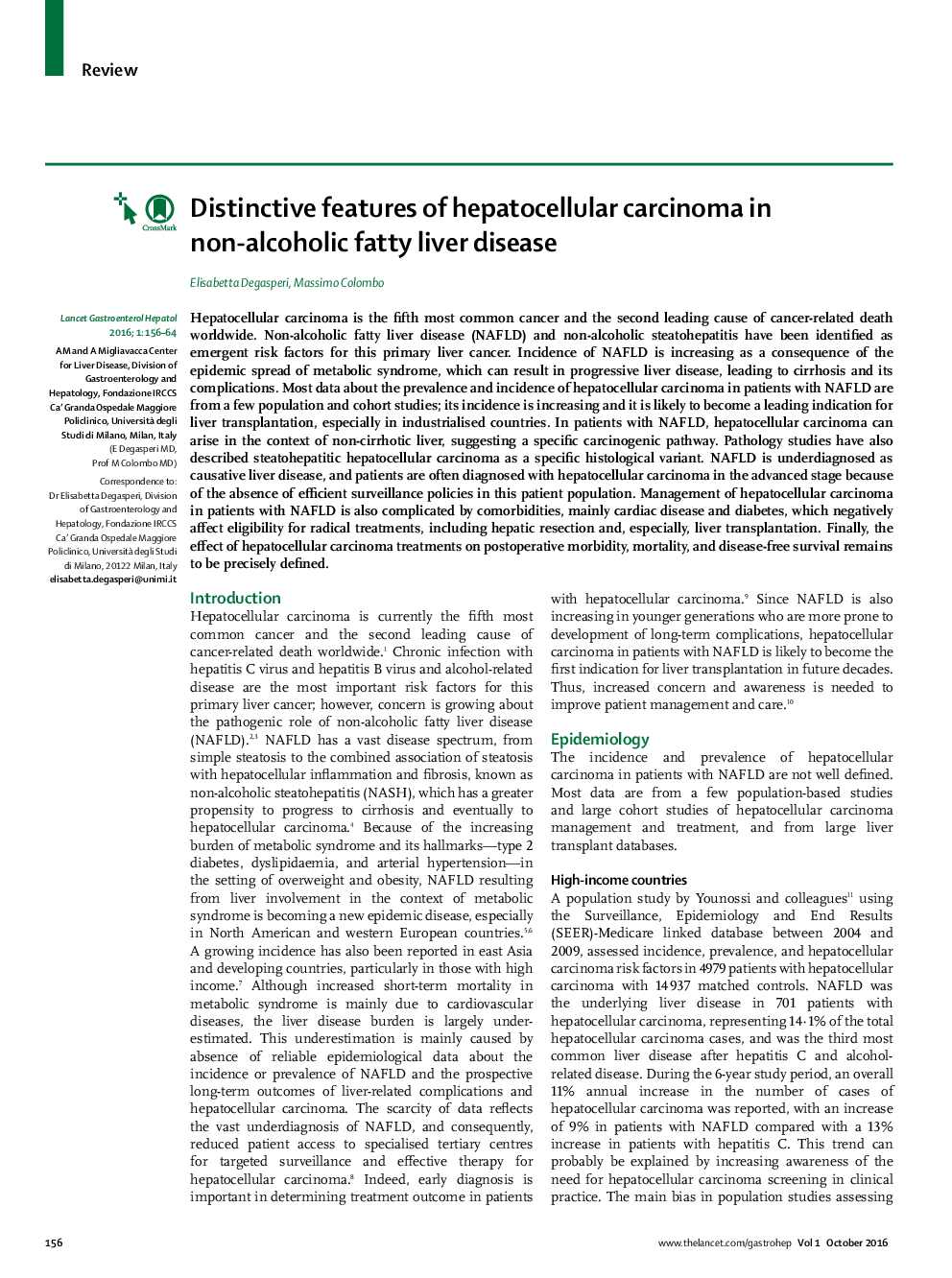| Article ID | Journal | Published Year | Pages | File Type |
|---|---|---|---|---|
| 3316257 | The Lancet Gastroenterology & Hepatology | 2016 | 9 Pages |
SummaryHepatocellular carcinoma is the fifth most common cancer and the second leading cause of cancer-related death worldwide. Non-alcoholic fatty liver disease (NAFLD) and non-alcoholic steatohepatitis have been identified as emergent risk factors for this primary liver cancer. Incidence of NAFLD is increasing as a consequence of the epidemic spread of metabolic syndrome, which can result in progressive liver disease, leading to cirrhosis and its complications. Most data about the prevalence and incidence of hepatocellular carcinoma in patients with NAFLD are from a few population and cohort studies; its incidence is increasing and it is likely to become a leading indication for liver transplantation, especially in industrialised countries. In patients with NAFLD, hepatocellular carcinoma can arise in the context of non-cirrhotic liver, suggesting a specific carcinogenic pathway. Pathology studies have also described steatohepatitic hepatocellular carcinoma as a specific histological variant. NAFLD is underdiagnosed as causative liver disease, and patients are often diagnosed with hepatocellular carcinoma in the advanced stage because of the absence of efficient surveillance policies in this patient population. Management of hepatocellular carcinoma in patients with NAFLD is also complicated by comorbidities, mainly cardiac disease and diabetes, which negatively affect eligibility for radical treatments, including hepatic resection and, especially, liver transplantation. Finally, the effect of hepatocellular carcinoma treatments on postoperative morbidity, mortality, and disease-free survival remains to be precisely defined.
